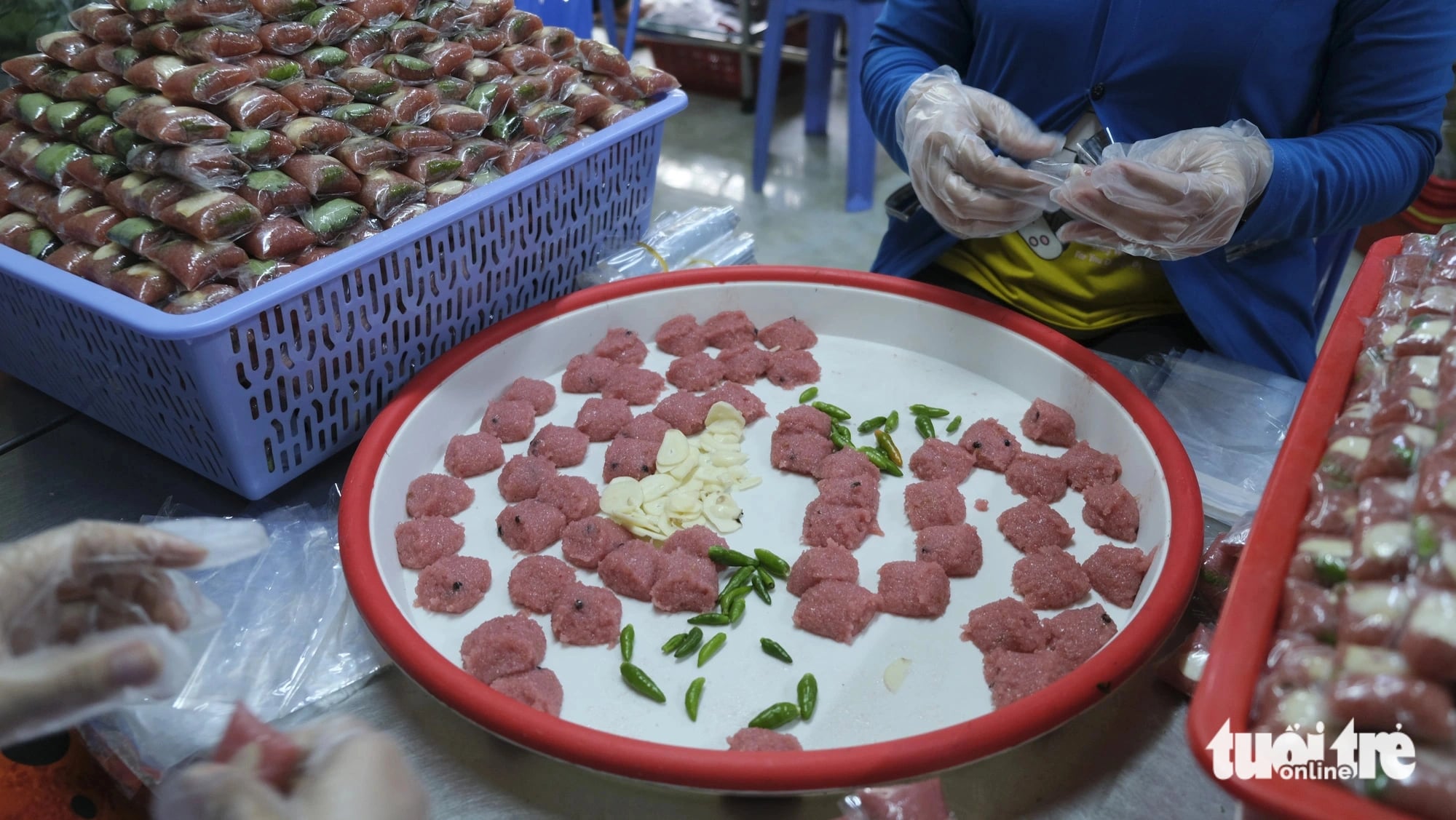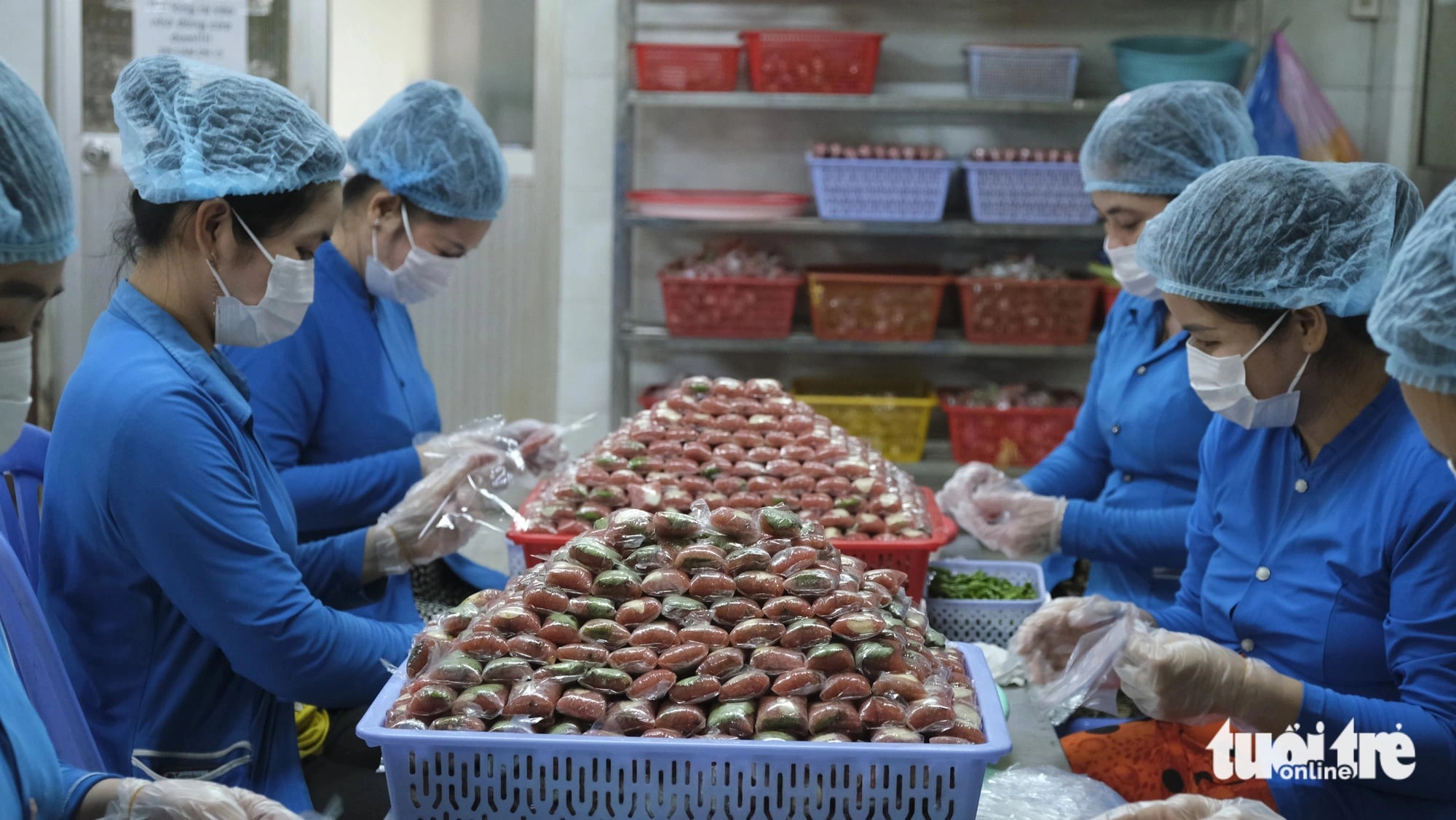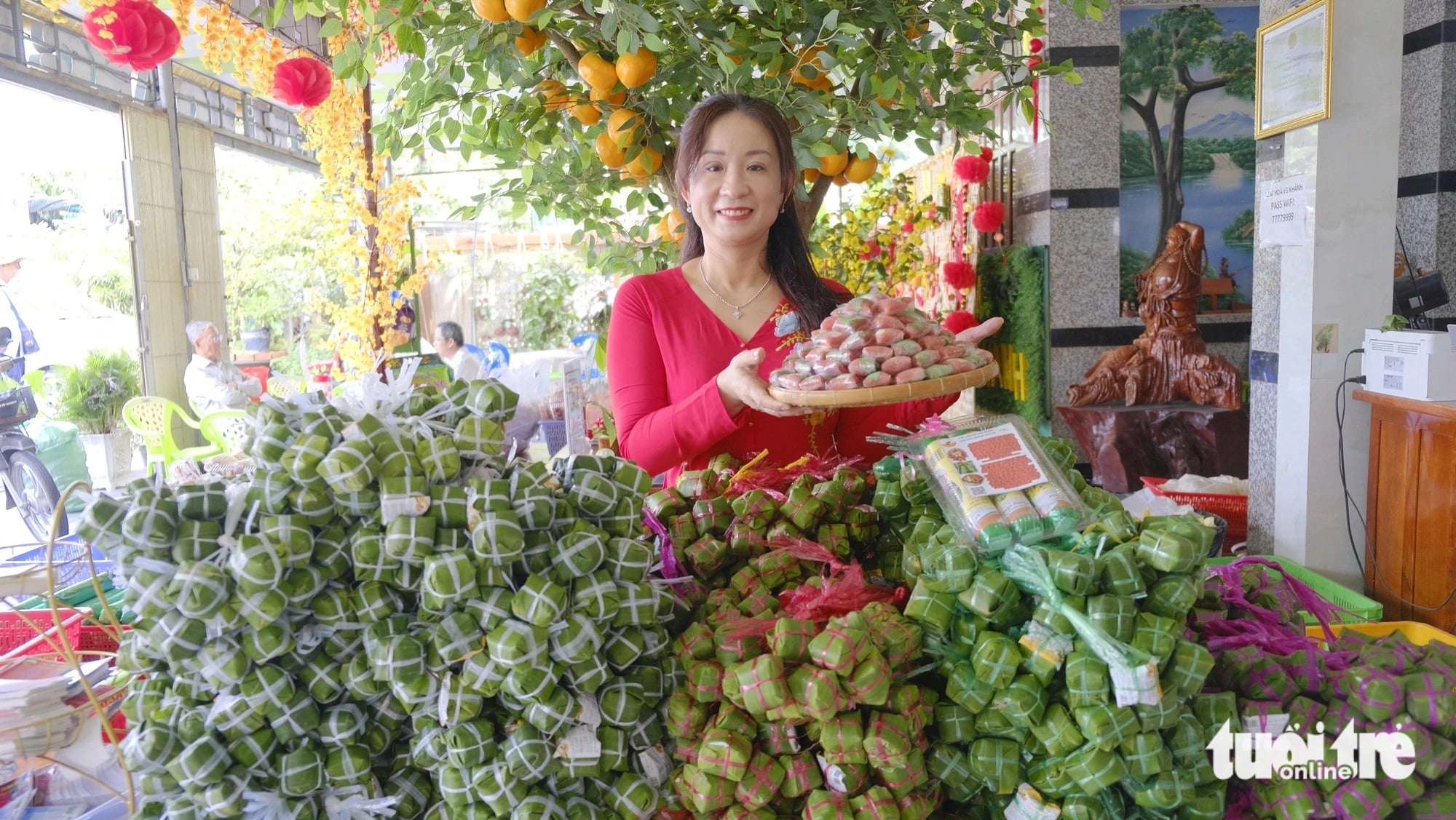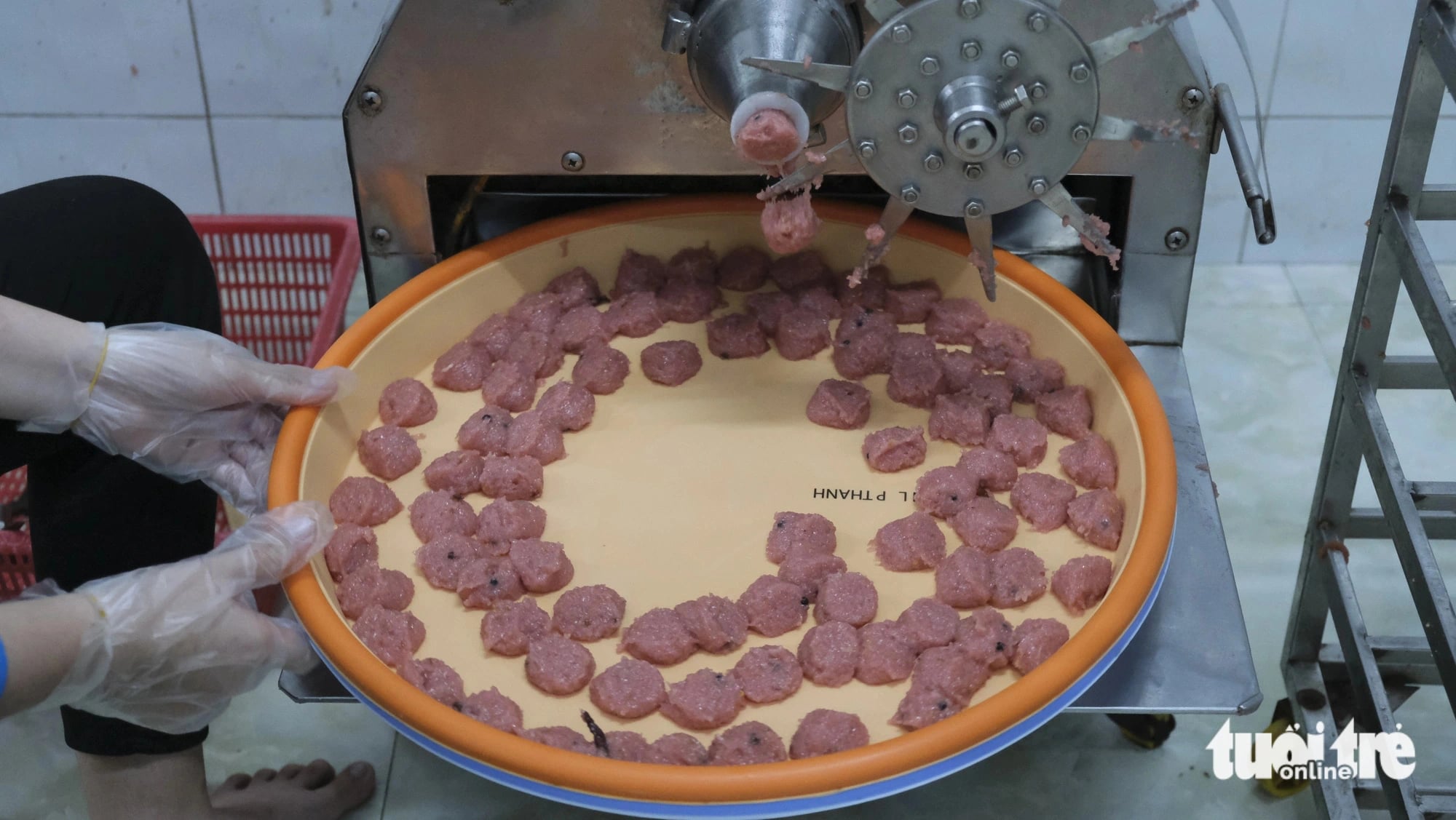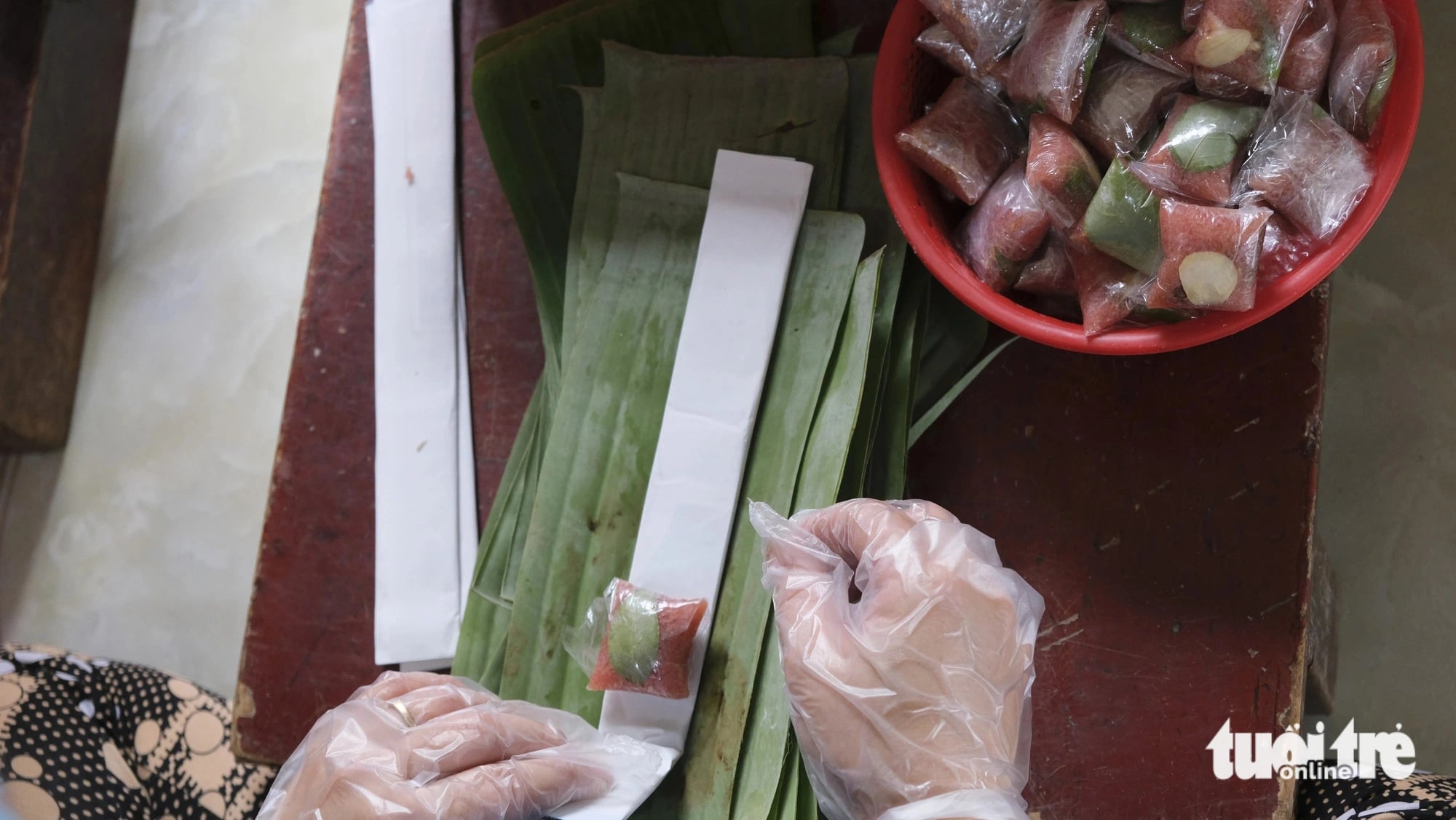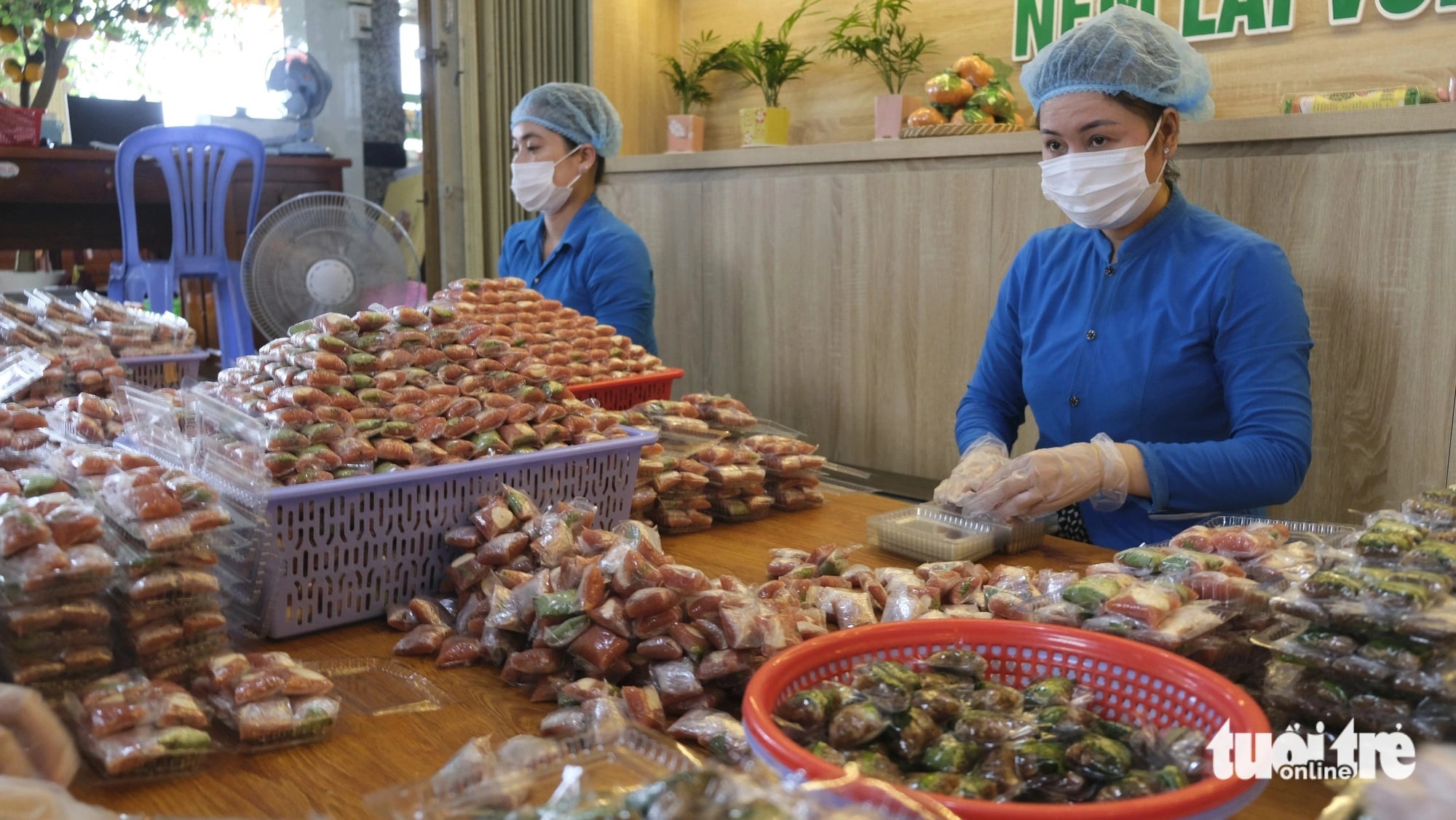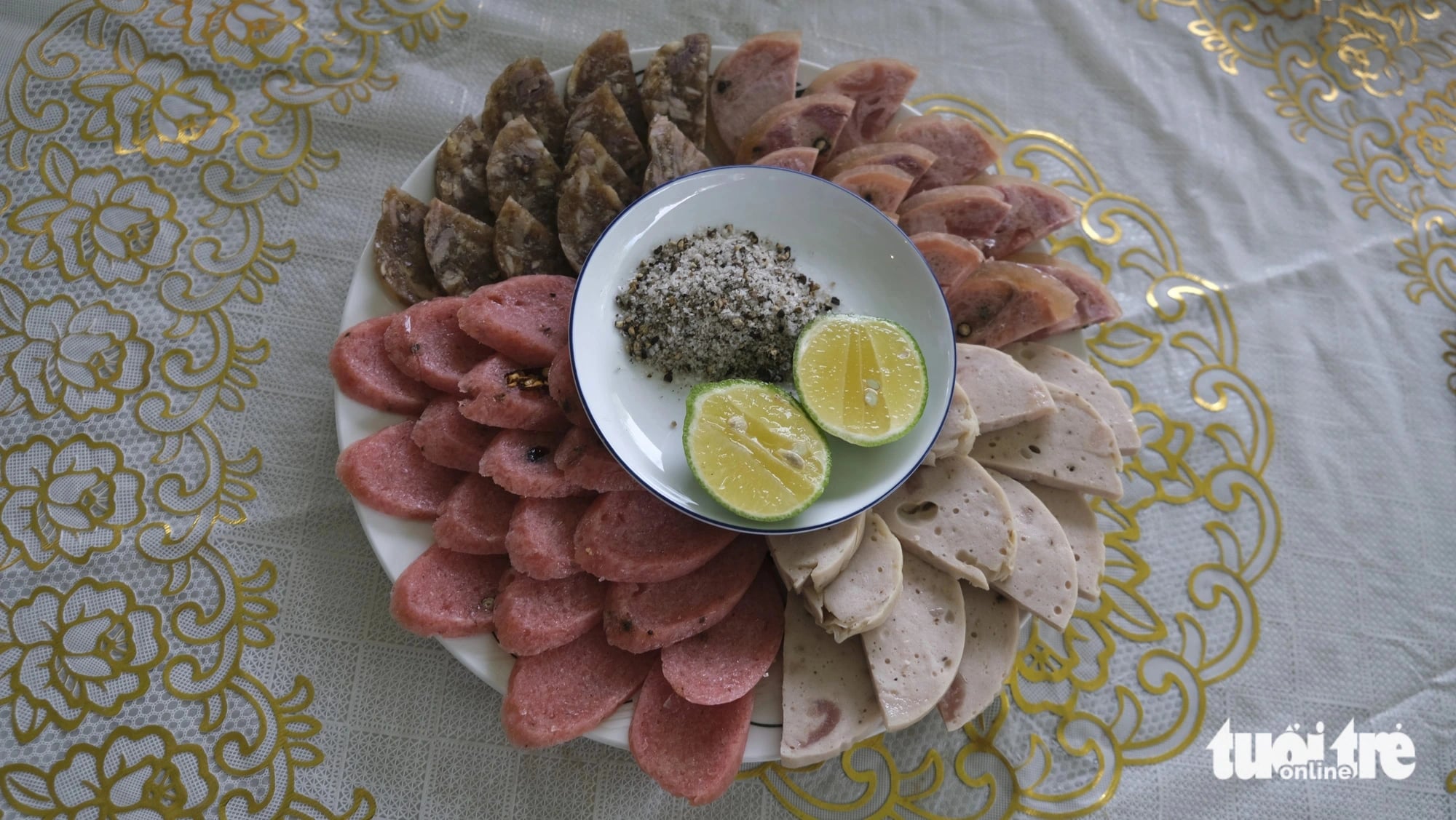Nem Lai Vung (Lai Vung fermented pork roll) is a renowned delicacy from the Mekong Delta province of Dong Thap, where it can be found at almost every roadside stall, ferry station, and rest stop.
Known for its slightly sour taste due to fermentation, nem, or nem chua, is made by mixing raw pork with boiled pig skin and allowing the mixture to ferment for three to four days before being consumed raw.
In recent years, Lai Vung fermented pork rolls have spread across provinces nationwide and can now be stored in the refrigerator for up to a month.
Today, there are more than 20 production facilities in Lai Vung District, with tens of thousands of rolls being produced and supplied to the market daily.
|
|
| Workers are wrapping 'nem chua' at Hoang Khanh workshop in Tan Thanh Commune, Lai Vung District, Dong Thap Province, southern Vietnam. Photo: Dang Tuyet / Tuoi Tre |
According to Dang Thi Ngoc Thuy, owner of Hoang Khanh workshop in Tan Thanh Commune, Lai Vung District, selecting quality ingredients is the most crucial step for making nem.
The main ingredients for making nem chua include finely ground lean meat and pig skin, spices such as sugar, salt, pepper, fish sauce, garlic, chili, star gooseberry leaves, and some additional ingredients.
|
|
| Dang Thi Ngoc Thuy has more than 20 years of experience in making 'nem Lai Vung.' Photo: Dang Tuyet / Tuoi Tre |
Thuy said lean thigh or pork rump meat is preferable because it is tender and contains little fat.
The meat must be fresh and still warm when taken out of the slaughterhouse.
The pig skin must be selected carefully to ensure it can maintain a crunchy texture.
To make nem chua, the meat is finely ground and marinated with spices, while the pig skin is boiled, separated from its fat, and shredded.
Next, the finely ground meat is mixed with the shredded pig skin. During this step, fried garlic, dried chili, and pepper are added to enhance the flavor and spiciness of the dish.
For portioning and packaging, a measuring machine is used to cut the mixture into equal pieces which are then wrapped neatly in plastic.
|
|
| A machine divides the mixture of ingredients into equal pieces for wrapping. Photo: Dang Tuyet / Tuoi Tre |
While wrapping, a slice of garlic, a star gooseberry leaf, and a green chili pepper are added for flavor enhancement.
To preserve the rolls for longer periods, they are wrapped again and banana leaves are used to cover the outside.
|
|
| Additional layers of wrapping for longer preservation. Photo: Dang Tuyet / Tuoi Tre |
Finally, the rolls are tied into bundles of ten or packed into boxes of ten for easier storage.
|
|
| Workers are packaging 'nem chua.' Photo: Dang Tuyet / Tuoi Tre |
The rolls are ready to eat after three to four days of fermentation.
Fermented pork rolls can be enjoyed directly without being cooked, or paired in other dishes.
|
|
| A plate of 'nem chua' (the red ones) and other types of Vietnamese pork rolls. Photo: Dang Tuyet / Tuoi Tre |
Like us on Facebook or follow us on Twitter to get the latest news about Vietnam!



